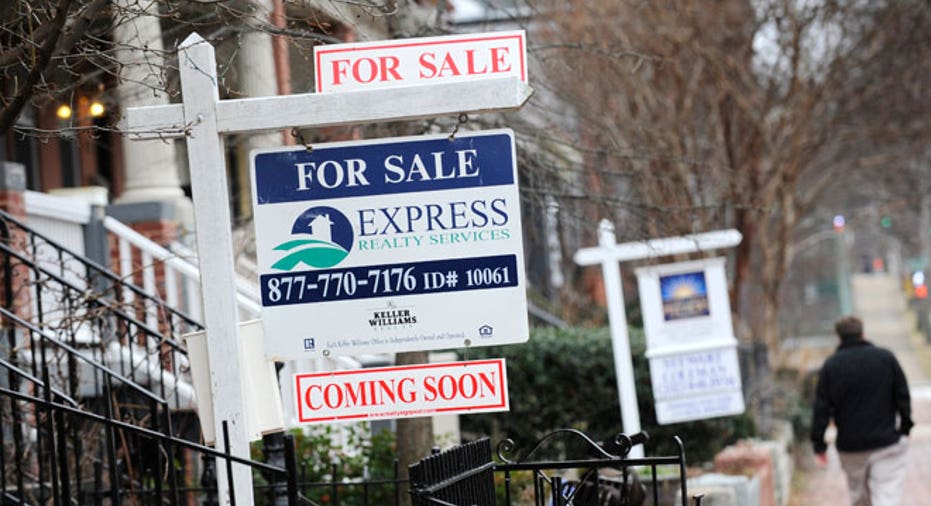Who’s Got the Power: Buyers or Sellers?

Despite a slowdown in the housing market during the second half of 2013, it’s still a seller’s market.
Just ask Rosa Chan Denis.
She and her husband sold the condo they bought and renovated in 2010 in a suburb of Boston for a hefty profit last year thinking they were going to take advantage of rising home prices and low mortgage rates.
“When the market hit a high, we saw an opportunity. We quickly sold our house and made a huge profit and we thought we would find this great house in a better school district,” she says.
On paper, the plan makes perfect financial sense. In reality, it’s been a nightmare for the family of four.
They’ve made 20 offers on homes so far, many of which were over asking price. “We have seller’s regret. We’ve tried everything. ”
The family is now living in an apartment with a nine-month lease with the thought they would have plenty of time to find a new home. The lease is up in June.
The weekends are dedicated to open houses where the couple takes turns sitting in the car with the kids while the other checks out the house. “There’s not time to think about it. It’s literally a conversation that goes, ‘I liked it.’ ‘Me too.’ ‘OK let’s make an offer.’”
“We have seller’s regret. We’ve tried everything. ”
The pair has gotten close to getting a home, but found a crack in the foundation during the inspection. “Homes with major structural damage are selling for 6, 7, $800,000,” Chan Denis says. “This has become a money pit with the amount of money we’ve dumped for rent, inspections and structural engineers. It’s definitely a seller’s market. We can’t even compete and we are putting down 50-60%.”
The Denis family isn’t alone in their plight to find their next home. Tight inventory has some potential sellers scared of not being able to find a new residence. “Inventory is being held back by inventory, it’s a very bizarre situation in the market right now,” says Ellen Haberle, economist at real estate brokerage Redfin.
Home sellers are expected to remain in the driver’s seat in 2014, but they’ll lose some of their power as inventory levels start to improve and rising mortgage rates shift some of the control to buyers .
“In general, it will remain more of a seller’s market than buyer’s,” says Haberle. “In most markets sellers will maintain the upper hand in the negotiation process and will be able to sell their home without much hassle.”
A research note from BofA Merrill Lynch Global Research out this week says that despite housing demand weakening in the second half of 2013 as mortgage rates climbed and higher home prices reduced affordability, the ball is still in the seller’s court. “It’s still a seller’s market…We expect this to become increasingly evident, resulting in a pickup in inventory later this year,” the statement said.
Home sellers are also feeling more confident about their prospects. A recent survey from Redfin shows 38% of respondents say now is the time to list, compared to 34% from the previous quarter and 22% from the same time last year. Forty-four percent of sellers report they are ready to move up to a nicer or larger home.
Even if 2014 still favors sellers, experts say we won’t see the buyer’s frenzy in 2014 that dominated many markets last year which led to bidding wars, contingent-free offers and rapid home value appreciation.
“We are starting 2014 with a much more balanced situation,” says Haberle. "Buyers will be far more discriminating with what they purchase since they are going to be paying higher prices and face mortgage rates between 4% or 5%. They will be thinking more along the lines of ‘We are buying for the home and not the deal.’”
Svenja Gudell, director of economic research at Zillow, still expects higher-than-normal home value appreciation this year, but only about a 4.8% increase compared to 6.4% last year. Even if more sellers put their home on the market, easing inventory levels, it will still remain an issue. “Inventory levels have been improving over the last six months and will continue to do so, but we won’t be back to normal levels this year,” she says.
The National Association of Realtors reported in January that inventory fell 9.3% at the end of December to 1.86 million available homes, which is about a 4.6 month supply at the current sales pace. A normal market has about a six to seven-month supply on the market.
If there’s a silver lining to low inventory levels, it’s that it has boosted home valuations, bringing more homeowners above water on their mortgages.
Home prices, which rocketed nearly 12% last year, are expected to rise at a slower pace this year, which could tempt previously-hesitant homeowners to hang the 'for sale' sign, which could lead to higher inventory levels.
“Now that they have equity they are more comfortable with their financial situations and willing to sell,” says Gudell.
Rising mortgage rates will reduce home affordability for buyers, which could create more cautious buyers. “Over the last two years people could afford much more house than they ever would have been able to,” Gudell says. “Now that the same home is going to cost them more, they are going to be taking into account that monthly payment much more seriously now.”